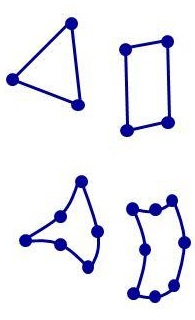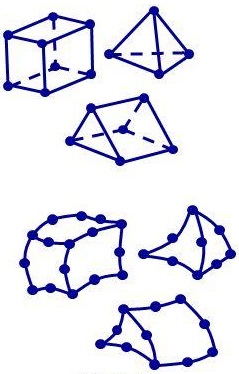Introduction to Finite Elements And the Big Picture
Courses > Finite Elements Method > Basics of Finite Elements > Introduction to Finite Elements And the Big Picture Introduction
Introduction
Application of physical principles, such as mass balance, energy conservation, and equilibrium, naturally leads many engineering analysis situations into differential equations. The exact solutions for differential equations are not applicable to many practical problems because either their governing differential equations does not have an exact solution or they involve complex geometries.
The finite element method is one of the numerical methods for obtaining approximate solution of ordinary and partial differential equations. It is especially powerful when dealing with boundary conditions defined over complex geometries that are common in practical applications.
 Concepts and Formulas
Concepts and Formulas
Complete solution procedure:
The approximate solution of any problem governed by a differential equation can be obtained by using the element equations by following the usual finite element steps:
- Development of element equations
- Discretization of solution domain into a finite element mesh
- Assembly of element equations
- Introduction of boundary conditions
- Solution for nodal unknowns
- Computation of solution and related quantities over each element
Advantages of using Finite Element Method:
The subdivision of a whole domain into simpler parts has several advantages:
- Accurate representation of complex geometry; while most analytical solutions are restricted to simplified geometries.
- Inclusion of dissimilar material properties; while most analytical methods are applicable to homogeneous materials.
- Easy representation of the total solution
- Capture of local effects.
Structural element types:
- One-dimensional (1D)
- Spring (rod) elements
- Beam elements

- Two-dimensional (2D)
- Membrane : in-plane loads only
- Shell : in-plane and bending moments
- Shear panel : shear loads only

- Three-dimensional (3D)
- Solid elements

- Solid elements
 Watch Videos
Watch Videos
 Solved sample problems
Solved sample problems
 Download Files
Download Files
 Read also
Read also
- Free download MATLAB file for finite element analysis of plane trusses + solved example + visualization, including temperature changes and initial strains
- What is Geotechnical Engineering? Subtopics, Salaries, Books, Journals, ...
- Top software for Geotechnical Engineers
- AISC 341-05 requirements for special plate shear walls
- How to read civil engineering drawings?
 Share
Share
Follow our official Facebook page (@civilengineeringbible) and Twitter page (@CivilEngBible) and do not miss the best civil engineering tools and articles!

